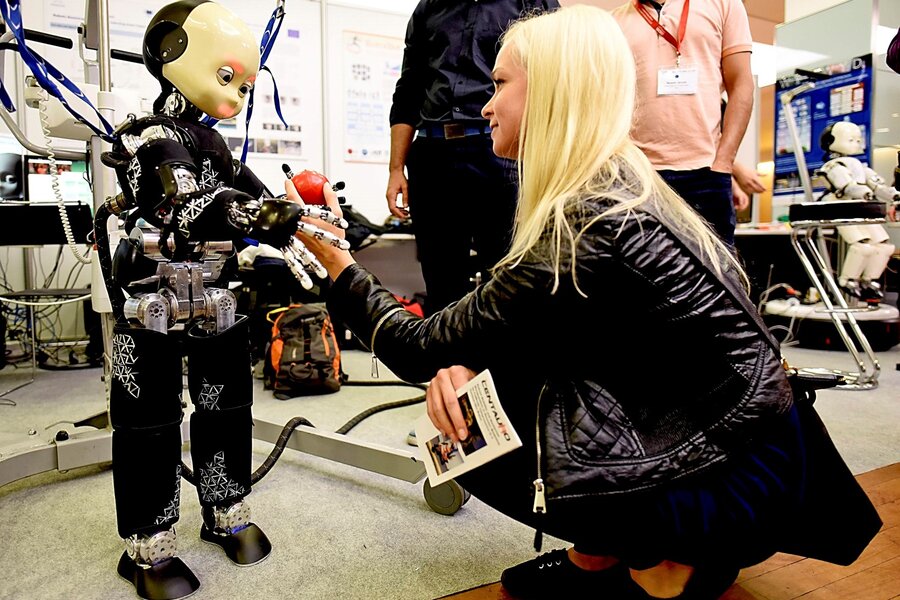What happens when you mix a robot and a cat? Scientists want to find out
Loading...
Science fiction films have taught humans to fear robots taking over the world, but researchers at an international robotics challenge would be content to stop them from breaking things when they fall over.
To do this, scientists have studied the efficient movements of humans and even cats. This has enabled researchers to program the robots to catch themselves, so they can fall with something at least akin to the lithe grace of cats, reported CNET. Georgia Institute of Technology Professor Karen Liu incorporated her research in feline mechanics into the robot she and then-graduate student Sehoon Ha, now working for Disney Research Pittsburgh, presented at a Defense Advanced Research Projects Agency (DARPA) event.
"From previous work, we knew a robot had the computational know-how to achieve a softer landing, but it didn't have the hardware to move quickly enough like a cat," Ms. Liu told CNET. "Our new planning algorithm takes into account the hardware constraints and the capabilities of the robot, and suggests a sequence of contacts so the robot gradually can slow itself down."
The robot contorts its body as it falls so as to touch the ground with the maximum number of body parts. This means the impact of the fall is dissipated across the robot’s structure instead of being concentrated on a single, delicate joint, the MIT Technology Review reported.
Robots that fall flat on their faces, so to speak, are partly responsible for making the DARPA robot challenge interesting even to non-scientist YouTube watchers, as the multimillion-dollar robots can topple when confronted by seemingly simple things like rocks or stairs.
"You are guaranteed to fall over sometimes," Matt DeDonato, the senior robotics engineer for Worcester Polytechnic Institutes's DARPA Grand Challenge team, told the MIT Technology Review. His team programmed their robot at the DARPA challenge to detect an imminent fall and go limp to avoid damaging the machine.
The falls that amuse YouTube watchers are not that funny for the robot’s creators if the fall breaks costly machinery, which is why the cat-like robot is significant.
"A fall can potentially cause detrimental damage to the robot and enormous cost to repair," Mr. Ha told the MIT Technology Review.
Going forward, scientists want to incorporate the expertise of living things into robot activity, so they can send robots where no humans have ever gone – or would wish to go. The 2015 DARPA robot challenge explored technology that would aid robots on rescue missions in nuclear spills. Space travel is another area where robots can precede humans, if they can discover how to do it.
"These very complicated robots try (to perform basic rescue functions) and they fail miserably," James Schwab, who has worked with robots as part of Mars Rover Challenges, told The Christian Science Monitor. "A geologist in the field can tell you more about a mineral with just their hammer than the Curiosity (Mars Rover) in the same amount of time."








